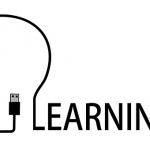
In Introduction to Anthropology, Sociology & Psychology (HSP3U/HSP3C) the allure to do an experiment with our students is ever present, especially considering the depth of study for each of the social sciences. I’ve compiled some fun, low-risk (high-reward) “minds on” experiments and activities that you can safely do with your students.
Of course, with any activity, it is important to familiarize yourself with the needs of the students in your class. Always allow students the option to “opt out” of any activity or, whenever possible, provide them with an alternative option based on their learning profile.
- Anthropology (Sociolinguistics): Analyzing Text Messages and Emojis
(B3.1 Explain how culture produces diverse forms of human behaviour)
The use of the emoji font has changed the way that people communicate, especially through text messages. Have students guess what the “official” emojipedia definition is for some classic emojis. This activity works with either small groups or as a whole class. After introducing linguistic terminology, I have the students analyze their own text messages using this worksheet. Encourage students to select three different individuals that they regularly text with. Some will choose a parent, grandparent, a friend or a manager at their workplace and in many instances the differences in text language use are pretty obvious. It’s a fun way to have students using their cell phones in a productive way.
- Sociology (Social Stratification): Evaluating your School’s Inclusivity
(D2.1 explain, from a sociological perspective, how diverse factors (e.g., social structures, social distinctions, socio-economic status) influence and shape individual and group behaviour)
It can be easy to overlook elements of our school’s architecture and school cultures that may not be as welcoming to some groups of students. For instance, do the bathrooms at your school have an automated door which allows for accessible entry? It’s a significant issue that can be regularly ignored by the wider population. First introduced to me by teacher @emma_irene_ann on Instagram, this activity can be used alongside a lesson on social stratification, discrimination or social inclusivity. Students are asked to explore (either through group/class discussion or physically by walking the building) what the school does well and what areas the school needs to improve upon. You can also invite your teacher librarian, bursar, Core Resource teachers and administrators to identify ways in which they are helping to ensure a wider culture of inclusivity. And should the students uncover significant needs, this is a perfect opportunity for them to communicate it to the relevant stakeholders.
- Psychology (Personality): The Pig Personality Test
(C3.2 assess how diverse personality traits (e.g., introversion, openness to experience, perfectionism) shape human behaviour and interaction in a variety of environments)
This is a fun minds on where students can see firsthand the sheer absurdity of personality tests. Have your students locate a blank piece of paper and ask them to draw the image of a pig. From there, this common ice breaker purports to identify the features of the illustrator’s personality. Was it drawn with many details? Then you are analytical. Is it facing left? You are more traditional. Your students will laugh at the “accuracy” of it all. From there it opens up an opportunity to discuss the flawed nature of personality tests and how (and if) a psychologist can accurately assess an individual’s personality.
- Psychology (Perception): Can you taste the difference?
(C2.2 explain, from a psychological perspective, ways in which context and the influence of other individuals can affect people’s emotional and behavioural responses)
This one requires a little money spent, but if you find the items on sale it’s not a significant stretch of the budget. For this, you’ll need some gravel (I just grabbed some from a pathway in my backyard), some cotton balls, plastic cups & spoons (enough for each student) and vanilla ice cream. For my class of around 30 students, two 2L containers was more than enough to satisfy each participating student. Canadian ice creamery, Chapman’s, sells vanilla ice cream that is kosher, as well as peanut, nut, egg and gluten-free at an affordable cost. Provide the class with enough cotton balls and gravel to go around. While it isn’t necessary for each student to have a cotton ball and piece of gravel, you’ll want enough so that it’s easy for all to participate before their ice cream melts. Have the participating students first taste the ice cream while holding the cotton ball, then taste the ice cream while holding a piece of gravel. For many, they will notice a difference in the quality of the ice cream. The ice cream will taste colder, or sometimes crunchy while holding the gravel. While holding the cotton ball, the ice cream will taste creamy or softer in texture. This is a fun way, especially in the warmer months, to showcase the ways in which our brains are easily susceptible to external stimulus.
- Psychology (Cognitive Psychology): How fast can you write?
(C2.2 explain, from a psychological perspective, ways in which context and the influence of other individuals can affect people’s emotional and behavioural responses )
Similar to the test of your students’ perception through ice cream, this experiment also tests the ways in which our brain responds to external stimuli. First, begin with the control experiment, by having your students obtain a piece of paper and ask them to copy down a paragraph of text from their textbook or an excerpt that you provide. See how many words they write within a given time frame (eg. 30 seconds). Then have them do the same thing, but this time play soft, calming music. Again, see how many words were written within the given time frame. Do it again, but with extremely fast music. Have the students reflect upon their feelings under the given conditions. Did their writing speed up or slow down? Did the tempo help or hinder their writing? This experiment can help illustrate the ways in which music can influence motivation, productively and overall cognitive processes.
Incorporating low-risk experiments into your social science classroom can enhance the learning experience for your students, as well as cultivate a more engaging environment. It allows them to not only see a practical application of theoretical concepts, while simultaneously engaging in hands-on exploration.
Christina Iorio is a teacher with the York Catholic District School Board and is a regular contributor to social media platforms regarding all things history and social science.
Instagram: https://www.instagram.com/therealmsiorio/


